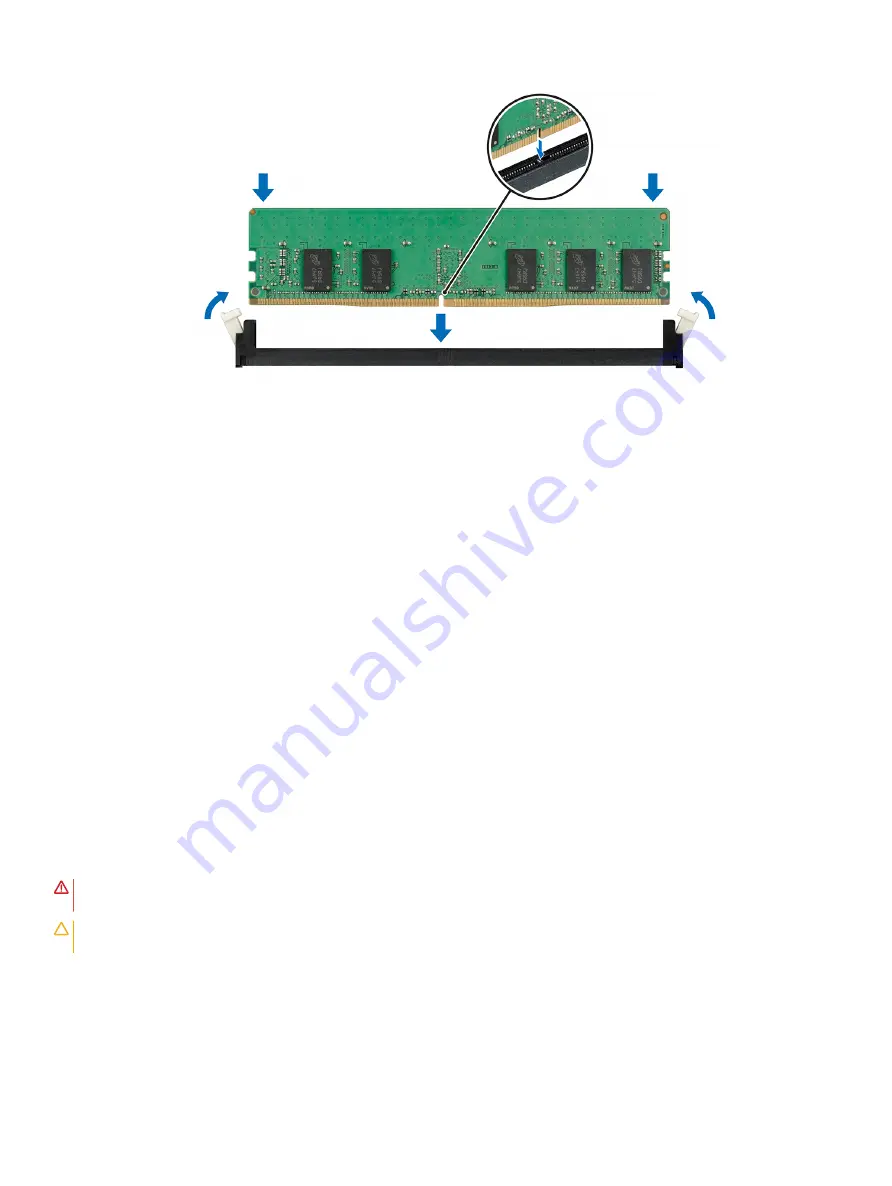
Figure 40. Installing a memory module
Next steps
1
Install the air shroud. For more information, see
.
2
Follow the procedure listed in
After working inside your system
.
3
To verify if the memory module has been installed properly, press F2 and navigate to
System Setup Main Menu > System BIOS >
Memory Settings
. In the
Memory Settings
screen, the System Memory Size must reflect the updated capacity of the installed
memory.
4
If the value is incorrect, one or more of the memory modules may not be installed properly. Ensure that the memory module is firmly
seated in the memory module socket.
5
Run the system memory test in system diagnostics.
Processors and heat sinks
The processor controls memory, peripheral interfaces, and other components of the system. The system can have more than one
processor configurations.
The heat sink absorbs the heat generated by the processor, and helps the processor to maintain its optimal temperature level.
Removing a heat sink
Prerequisites
WARNING:
The heat sink may be hot to touch for some time after the system has been powered down. Allow the heat sink to
cool before removing it.
CAUTION:
Never remove the heat sink from a processor unless you intend to remove the processor. The heat sink is necessary
to maintain proper thermal conditions.
1
Follow the safety guidelines listed in
2
Follow the procedure listed in
Before working inside your system
.
3
Remove the air shroud. For more information, see
.
Steps
1
Using a Torx #T20 screwdriver, loosen the captive screw 4 on the heat sink.
Installing and removing system components
79






























